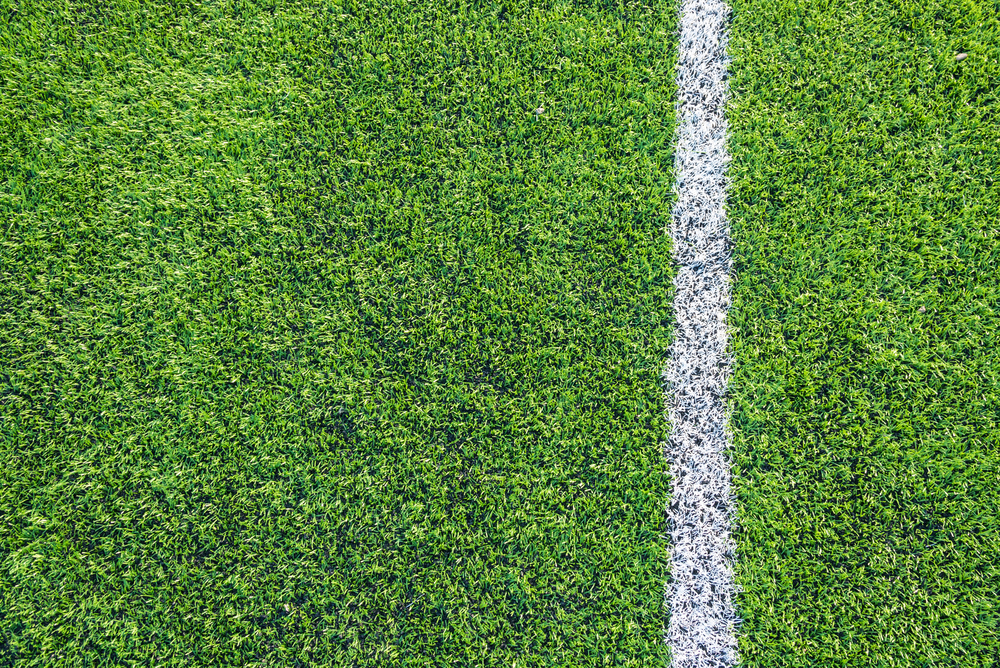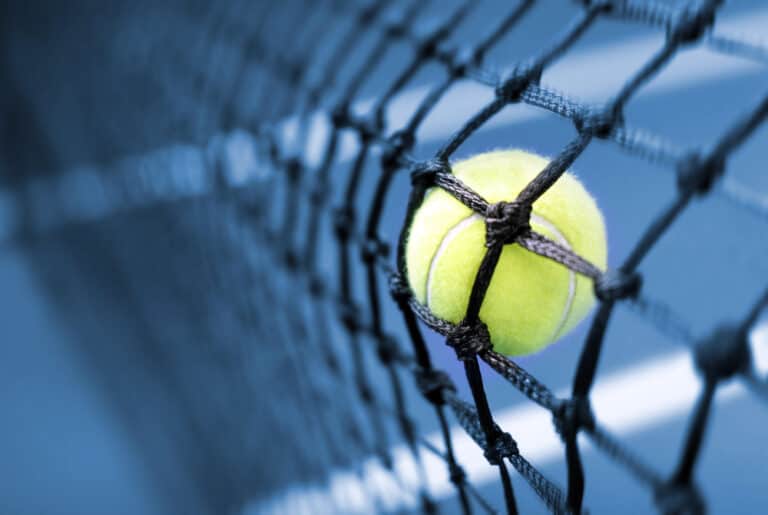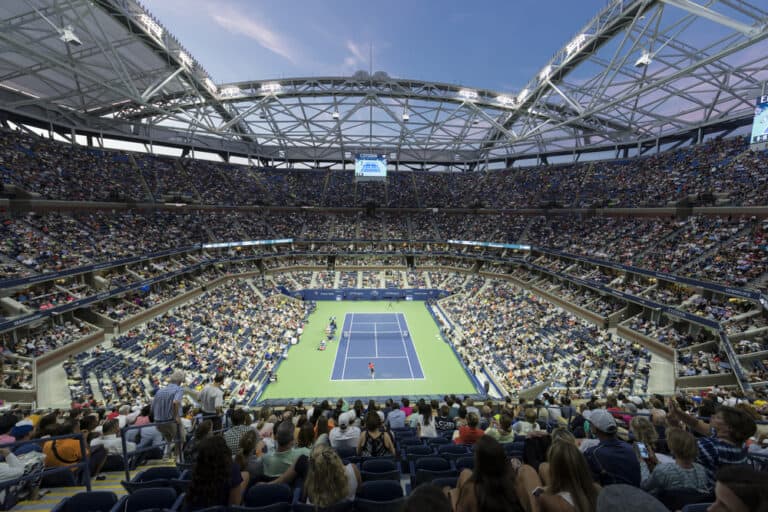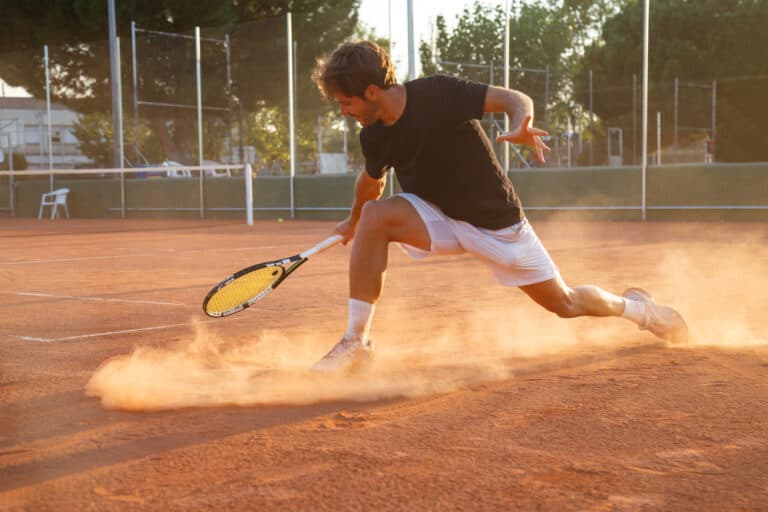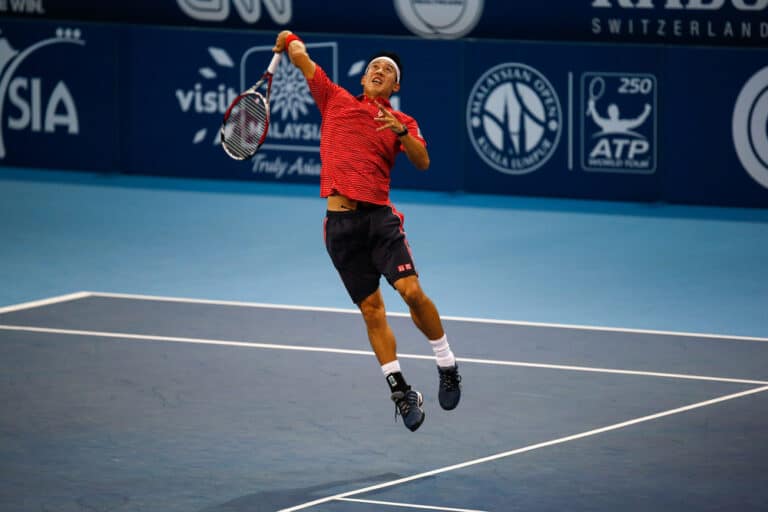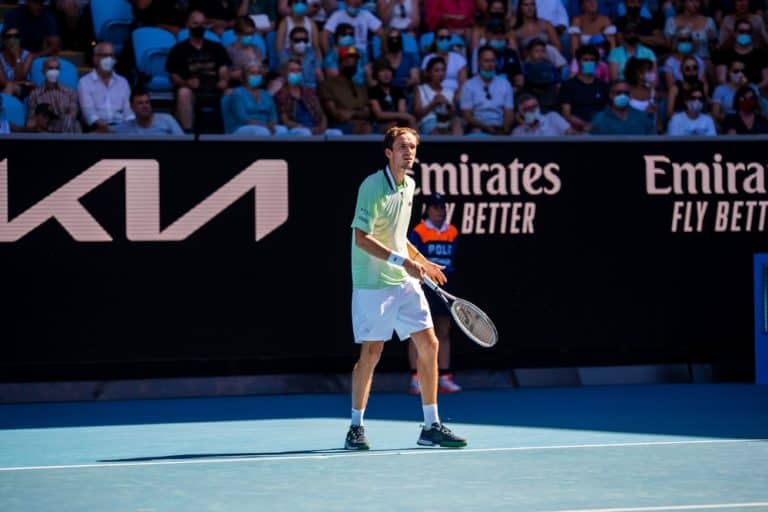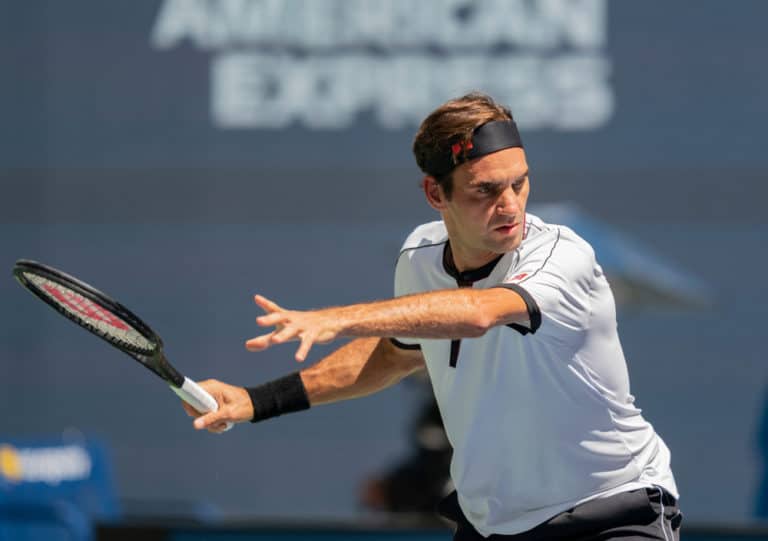Why Is Tennis On Grass?
Every July the professional tennis circuit moves onto the lush green grass at the All England Lawn Tennis and Croquet Club for the Wimbledon Grand Slam tournament. This leads to the logical question of why tennis is on grass when nearly all the other tournaments on the professional calendar are either on clay courts or hard courts.
Tennis gets played on grass because lawn tennis was invented as a game played on grass. These days very few tournaments are played on grass as grass courts need daily maintenance year-round to be in the condition needed for tournament play.
Let’s take a closer look at exactly why tennis is played on grass and if there are any extra skills that you need in order to be able to play well on grass.
Why Is Tennis On Grass?
Tennis was first played on grass when it was invented and is formally known as lawn tennis, giving an indication of its heritage as a game that was played on grass. The other two court surfaces of clay and hard courts followed later.
These days there are relatively few grass courts still in existence as they require significantly more maintenance. Hard courts require the least maintenance and are therefore the most prevalent type of surface used on tennis courts.
Why Is tennis Faster On Grass?
When playing on a grass court, the ball doesn’t bounce as high as it does on hard courts and clay courts. This is because grass is the most slippery of these surfaces so the ball doesn’t grip the grass when it bounces. The softness of the turf under the grass also contributes to the ball having a lower bounce.
The low bounce means that the ball carries more speed after the bounce. This fact plays to the advantage of players who have a strong service.
The other factor that makes grass different from other court surfaces is that relatively speaking, grass is a more uneven surface. As a result, grass is prone to giving the ball a slightly uneven bounce. Strong net players are at an advantage as they do not need to contend with uneven bounce when playing volleys.
Is Tennis Supposed To Be Played On Grass?
The question is less about whether tennis is supposed to be played on grass, but more about why tennis was played on grass. What we know today as tennis started in Victorian times and was played by the British aristocracy on the grass lawns in the huge gardens of their country estates.
This early form of tennis was known as lawn tennis and is a name that has remained to this day when referring to tennis in Britain, irrespective of what surface tennis is played on. To illustrate this point, the British tennis federation is still called the Lawn Tennis Association.
The oldest of the four Grand Slam tournaments is Wimbledon, which is still played on grass at the All England Lawn Tennis And Croquet Club. Thanks to Wimbledon and the other British tournaments that players use for practice during the month prior to Wimbledon, the tradition of lawn tennis and grass as a playing surface has been able to be preserved.
What Is Different About Playing Tennis On Grass?
The technique that you need to be able to play well on grass is just about the opposite of playing on clay. That is the reason behind professional players playing a series of minor grass court tournaments the moment they finish at the French Open. They need to readjust their play to be able to cope with the speed and bounce of grass courts if they want to have any chance of performing well at Wimbledon.
On other court surfaces the ball has a tendency to grip the court as it bounces, resulting in a higher bounce. The higher bounce scrubs off some forward momentum from the ball making it slower. Also, when the ball momentarily grips the court as it bounces, some of the speed/energy from the ball is transferred to the ground, slowing the ball slightly.
In contrast, grass courts have a more slippery surface, meaning that the ball will slide off as it bounces rather than gripping the surface. In addition, the softer earth under the grass causes a lower bounce. The combination of lower bounce combined with the ball sliding off the court as it bounces means that the ball loses very little speed at all, making grass the fastest of all the tennis court surfaces.
Players need to adapt to the faster surface so that they don’t mistime their shots. What makes it more difficult is that the grass court part of the professional tennis circuit comes immediately after the French Open and the other clay court tournaments. Clay is the slowest court surface that the players have to contend with all season. So, moving immediately from the slowest surface to the fastest surface requires a substantial change to how they time their shots.
Another aspect of playing on grass courts is that the slippery nature of the surface affects more than just how the ball bounces. It also means that the players have less grip underfoot. In order to play grass court tournaments, players need to wear special grass court shoes that will give them more grip on the slippery surface. Even so, players need to adapt how they move on the court to avoid having a foot slipping out from under them which can easily result in a painful muscle pull – or worse.
Is Grass Faster Than Hard Court?
Grass courts have a noticeably faster surface than hard courts. When I played tennis as a junior the practice wall that I had access to had a grass surface. After many hours of practice on the grass surface it usually took me a bit of time to adapt to the higher and slower bounce when I stepped onto a hard court for a game of tennis.
Thinking back about it now, I can remember that practicing on the faster grass surface stood me in good stead when I played against adults because I was more adapted to hitting balls that were coming onto my racket quicker after bouncing.
The reason why the grass is such a faster surface to play on is that grass is more slippery and hard courts have a grippy surface. Grippy surfaces slow the ball and make it bounce higher. Grass courts, on the other hand, let the ball slide off with a lower bounce and nearly no loss of speed.
When And Where Was The First Tennis Tournament Played On Grass?
Before we get to the dawn of tennis tournaments being played on grass we need to look a little into the formalization of tennis into a sport. What originated as lawn tennis played by British aristocracy on the lawns of their country estates, evolved into what we now know as the modern game of tennis with the first formal courts being marked out and used in Birmingham, England.
Then, in 1877, the first men’s tennis tournament was held at the All England Croquet and Lawn Tennis Club in Wimbledon, London. This is the same venue where the Wimbledon tournament still happens today. It was the world’s first official lawn tennis tournament. Later, when more tennis tournaments were added to the calendar, Wimbledon was recognized as the first-ever Grand Slam tournament.
So, not only was the 1877 tournament at Wimbledon the first tournament to be played on grass, it was the first-ever tennis tournament. Other types of tennis court surfaces only followed later.
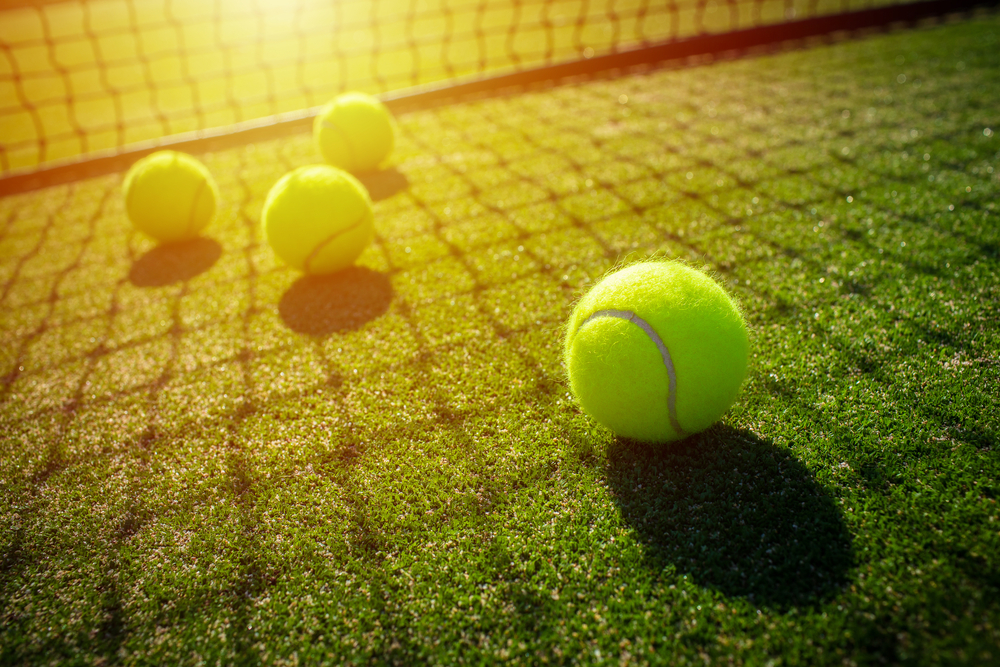
What Tennis Tournament Is Before Wimbledon?
During the two weeks between the conclusion of the French Open and the start of Wimbledon are two grass-court tournaments to give players the opportunity to adapt their play from the slower clay courts to the faster grass courts.
The first of these tournaments is the Queen’s Club Championship which takes place during the week immediately following the conclusion of the French Open in June each year. The tournament has been at its current location since 1890. The Queens Club Tournament started with both men’s and women’s singles tournaments.
The Queens Club Championship was suspended during both world wars and continued until 1973 when the tournament was discontinued for a further 3 years. When the tournament resumed in 1977 it was a men-only event on the ATP tour, and still is men-only today.
The other grass-court tournament immediately before Wimbledon is the Eastbourne tournament, held at the Devonshire Park Lawn Tennis Club in Eastbourne. The event was first held in 1974, at the beginning of the 3-year suspension of the Queen’s Club Championship.
The Eastbourne Tournament’s place on the calendar is during the week between the conclusion of the Queen’s Club Championship and the start of Wimbledon. From the start, there were both men’s and women’s tournaments. Eastbourne is still on both the ATP and the WTA tours, though sponsorship constraints forced a suspension of the ATP event during 2015 and 2016.
The reason behind suspending the men’s event for those years and keeping the women’s event during the two years of limited sponsorship was that the men still had the Queens Club Championship as a preparation tournament for Wimbledon and the women did not.
Each year, both the Queen’s Club Championship and the Eastbourne Tournament attract the top-ranked ATP and WTA tour players who want to adapt their game to cope with the faster grass courts. During the same two weeks preceding the start of Wimbledon, lower-ranked players will already be at Wimbledon for the qualifying tournament.
Why Are Grass Courts So Rare?
The reason why there are so few grass tennis courts is that they are such high maintenance. Tournament organizers and tennis clubs prefer using hard courts as they have the lowest maintenance costs of all types of courts.
Grass courts require daily maintenance and their usage needs to be limited to prevent the grass surface from deteriorating.
Is Wimbledon Real Grass?
For nearly all of its history, the Wimbledon tennis tournament has been played on real grass. However, Wimbledon began trials with hybrid grass in 2016 which lead to the building of hybrid courts in 2020 that have been used in the competition since 2021.
These hybrid courts are still 95% real grass but have plastic fibers as reinforcement. Hybrid courts have the same feel as real grass, but are more durable and can withstand more hours of active play without degrading.
Are Wimbledon Courts Watered?
The courts at Wimbledon are monitored 24 hours a day to ensure that the grass is as healthy as possible at all times. The courts are watered, weeded by hand, rolled, and mowed every day.
During the tournament, the courts are mowed daily to a length of precisely 8mm and the timing of any watering is critical to ensure that the soil is not waterlogged and that the surface of the grass is dry.
A waterlogged court will get damaged if it is used before it has a chance to drain and dry. If the surface of the grass is damp it will be slippery, making the players more prone to slipping and injuring themselves.
Is Wimbledon Grass Replaced Every Year?
All of the courts at Wimbledon are completely renovated in September each year for the start of autumn. Any dead patches are cut out and replaced with fresh turf from the grow beds. Wimbledon uses 9 tonnes of grass seed each year for court maintenance and renovations.
During the Wimbledon tournament, all the courts are re-lined, mown, and rolled daily to ensure that the grass is exactly 8mm long for each day of play.
When Did Australian Open Stop Playing On Grass?
The Australian Open was a grass-court tournament up until the 1987 edition. As of 1988, the tournament was played on hard courts. At the time when the Australian Open made the change to hard courts, there was some speculation that Wimbledon would be making a similar change but the London Grand Slam has remained true to its heritage.
Since making the change, three different types of hardcourt surfaced have been used. The first was green-colored Rebound Ace up for the first 20 years to 2007. After that, they switched to blue Plexicushion for 12 years from 2008 to 2019, and have been using blue GreenSet since 2020.
What Are Grass Tennis Courts Better For?
Grass courts have the fastest of all tennis court surfaces due to lower bounce and more slippery surfaces. The courts also have a reputation for having a slightly uneven bounce as blades of grass are not all identical.
For these reasons, grass courts are better for players who have a strong service to make better use of the faster surface as well as those players who are strongest at the net. The advantage of playing a volley on a grass court is that you don’t have to contend with a potentially uneven bounce.
Are Grass Tennis Courts Hard On The Body
Grass courts are not as taxing on the body as hard courts as the surface is able to absorb some of the impacts when players run across the court. The faster surface of a grass court tends to lend itself to shorter points and fewer long rallies. This means that a player will be running less during a tennis match on a grass court.
Grass courts provide the least amount of exercise and the lowest calorie burn rate of all the types of tennis courts. This means that players at Wimbledon need to adjust their nutrition during matches to match the lower calorie burn rate to avoid any digestive issues during a match. Because Wimbledon comes just two weeks after the French Open where players burn significantly more calories, players need to adapt their daily calories quite quickly when making the switch between clay courts and grass courts.
Even though grass courts are less physically taxing than other tennis courts, the ball hits the racket with more speed, resulting in more shock and torsion for the arm, shoulder, and upper back.
Why Is Federer So Good On Grass?
Several factors relating to Federer’s style of play make it more suitable for grass as a court surface.
In general, players spend nearly all their time at the baseline, playing long rallies whereas Federer is equally good at the net. The faster surface and lower bounce are better suited to playing volleys where you don’t have to contend with a ball bouncing differently from how it bounces on the rest of the professional circuit.
Even though Federer’s service is a little slower than many of his opponents, it is very hard to read. His opponents can only begin to move once the ball is already in flight. Here again, the grass court surface plays to Federer’s advantage. The lower bounce and faster speed after the bounce give his opponents less reaction time and make the Federer service feel faster than on other court surfaces.
Finally, thanks to Federer’s style of play, he is able to cope with lower-bouncing balls better than his opponents. This is especially true on the backhand side where the “trademark” single-handed backhand that Federer uses allows him to get his racket head lower without sacrificing power or control.

